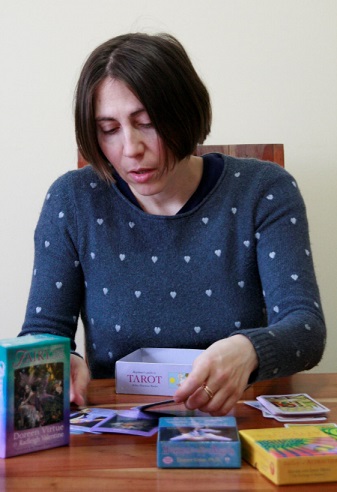
Lord Alan Sugar.
« Back to part 1. This is Part 2 of 4. » Next part 3. Part 4.
179
Owners of companies tend to exaggerate the value of their companies. Alan would divide the claims they make by two to get a sense of the real situation…
181
In business Alan pays attention to how people dress, how they look, and what they transmit in their style, class, and emotions.
186
Always give people elegant way out – something that they can win for themselves. Do not push people against the corner; rather share some prosperity with those who helped you.
194
The most successful businessmen received some help from others on their way to success – but many will refuse to admit to it.
205-206
In the early 1980’s, in a corner of a store selling up-market recording equipment, Alan noted a Sharp twin cassette deck for copying tapes. He immediately decided to develop and sell a double cassette deck tower system for the mass market.
207
Alan used reverse psychology in his ads. The double cassette deck came with an advertisement saying in bold that it is illegal to copy copyrighted material. In effect, this note gave people the idea that they can actually do so, and duplicate tapes, using that double cassette deck.
209
A led-in price product – a simpler model of product at a lower price to attract the customers. Then when the customers are attracted by the lower price, for example a £39 model, the salesman will praise the benefits of the advanced model at £49. Alan says that 9 out of 10 will then go to buy more expensive model.

Lord Alan Sugar, founder of Amstrad, and author of ‘What You See Is What You Get My Autobiograhy.’ © Gil Dekel.
211
The boom in sells of CB Radios (‘walky-talkies’) declined quickly in 1982. It was a passing craze, and Currys stopped buying walky-talkies even thought they had given firm orders to suppliers. This taught Alan that big chain retailers are not reliable. Only once products been delivered and paid for can you consider an order done.
232
Usually bosses delegate their deputies to solve issues, yet Alan would prefer to hear things first hand, and would get involved with the technicalities of things. He would cut through the smoke and get to the heart of the issue.
The difference between entrepreneur and an academic is that an academic may focus on one supplier, never think to move on to a better one even if they get stuck somewhere in the business with that supplier. Entrepreneur people, on the other hand, will always focus on moving on to better opportunities, and will do so at any chance they get.
233
On 11 April 1984 Alan announced their CPC464 computer, promising that Amstrad will condense 2 PCBs into one chip, and sell the PC at a breakthrough low price of £199. This announcement alone resulted in Amstrad’s shares rising, allowing Amstrad to raise £12 million, which were needed to finance the stock that was required to build up these computers…
238
An eager Spanish man wanted to represent Amstrad in Spain so much that he offered Alan ten software he had already had written for the CPC464 computer, for free. Software for computers were in great need those days.
245
When the Spanish government banned imports of 64K RAM computers, Alan used an old trick – he added more ram chip to his computers, to avoid the 64K RAM ban. However, the computers were not really faster, rather simply fitted with extra Ram chip, and presented as 72K RAM. This was a quick solution, in time for Christmas shopping.
246
By presenting this ‘new’ PC as a ‘72K Ram’ PC Alan “basically stuck two fingers in the air to the Spanish government.” Alan had to use that trick simply because all advertisers had been already booked before the ban and retailers had already placed their orders. Amstrad went to sell 50,000 units in Spain in that Christmas of 1985.
Advertisement agencies are good at coming up with slogans, which is the punch line of the adverts. Alan thinks that they tended to put high charges for the photo shoots.
247
The Amstrad philosophy – pile the products high, and sell them cheap. In their ads they will show the product, what it does, the price, and where to buy it. Alan argues that there is a problem with ‘clever’ or sophisticated ads/photos – no one can associate the clever photo and concept with the seller and the product.
255-256
Alan took risks based on his gut feelings, taking gambles before testing the market. Based on his gut feeling he produced a computer with built-in printer, ending up with 100,000 units sold. Alan was a pioneer in the All-in-one word processor: a pc, with software and a printer, sold at £399 (while IBM sold at £2500).
261
Do not trust retailers to support your products, but rather you must generate demand for your products yourself. That demand will drive the customers to the retailers selling your products. You must create a situation where the retailers need you, and you do not need them. When you are no longer the ‘darling of the market’, retailers will simply dump you.
267
Alan was ready to take risks and place large orders, in contrary to business school’s models of market research, and testing the market with small scale products before embarking on large-scale production.
When Alan had no time to test the market, he would go with his gut feelings.
A good businessperson needs to have the ability to:
– spot trends and tendencies
– observe what competitors are doing
– condense the products (make them smaller and more effective)
– bring prices down.
It takes only one great idea for a product or service. Then you only need to keep the production line of that product.
End part 2 of 4.
» Next part 3. « Back to part 1.
» Part 4.
28 January 2011.
This work © Gil and Natalie Dekel.


 - Reading with Natalie, book here...
- Reading with Natalie, book here...